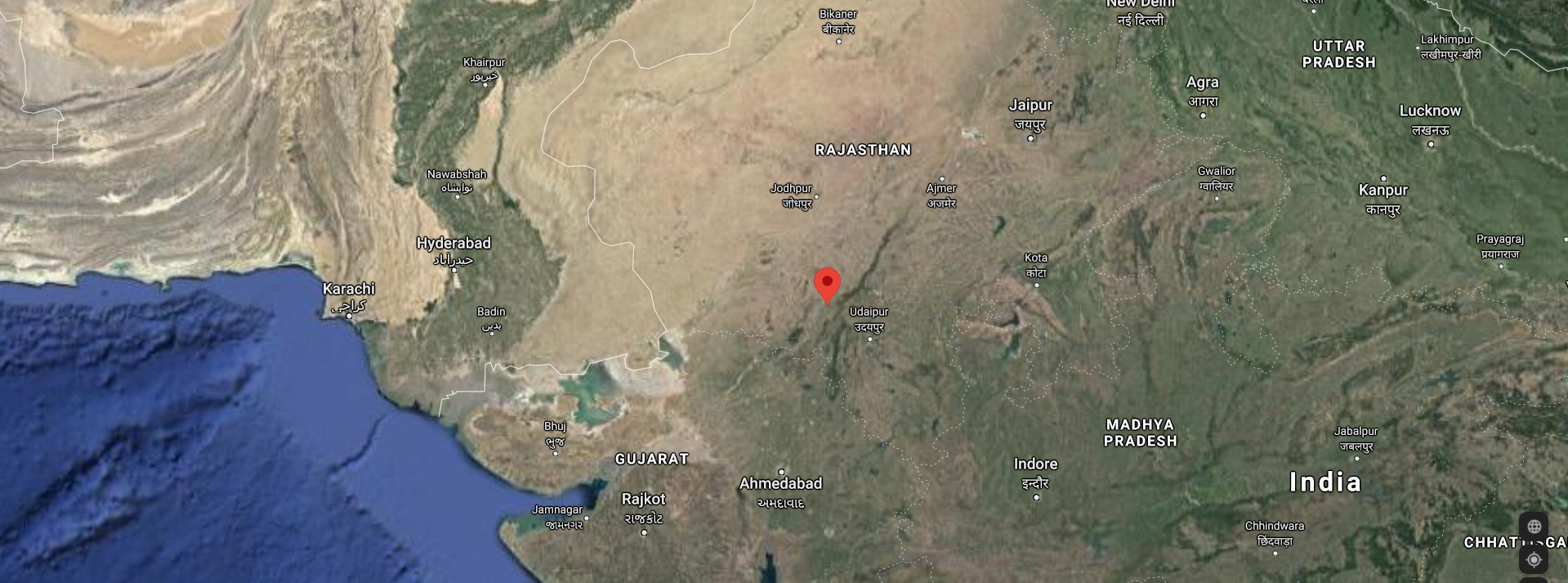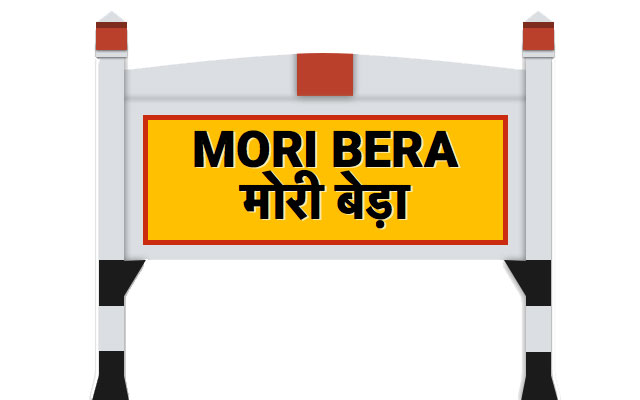History

Bera Nagar is an ancient city nestled in the lap of the Aravalli ranges. This region is called Godwad, which is between Marupradesh and Mewar. Bera has a history of different eras.
Bera Timeline
 In Rajasthan, evidence of human habitation of 1 to 4 lakh years ago has been obtained from Didwana, from the valley of Luni river of 1 lakh – 40 thousand years, and from Bagore, Tilwara, etc. from 5 – 10 thousand years ago. The culture flourished on the banks of the Pachmatra and Banas rivers of Kalibanga (Harappan) and Mewar 5000- 3500 years ago.
In Rajasthan, evidence of human habitation of 1 to 4 lakh years ago has been obtained from Didwana, from the valley of Luni river of 1 lakh – 40 thousand years, and from Bagore, Tilwara, etc. from 5 – 10 thousand years ago. The culture flourished on the banks of the Pachmatra and Banas rivers of Kalibanga (Harappan) and Mewar 5000- 3500 years ago.
The Ahar Banas culture, close to its region, was contemporary to the later period of the Indus Valley Civilization. Both these civilizations had trade relations. This region is located to the south of the Matsya region described in the Mahabharata (about 5000 years ago). The period between Lord Neminathji and Lord Mahavira (2400 – 3000) years ago is called the Mahajanapada period. During that period, this region was a part of the Kuru, Matsya, and Surasen Mahajanapadas at different times.
In that period, Lord Mahavir visited this area. One of the upsarg site is the present-day Bamanwad tirth.
There is mention in the books of Jainism “नाना,दियाना,नांदिया जीवित महावीर स्वामी विचरिया”
After that, the region was a part of the Nanda Dynasty and the Maurya Dynasty. After the fall of the Maurya dynasty, in the second century AD, foreign powers took control of the region. After the fall of the Shaka empire, for some time the Kushans, and later from the third century to the fifth century, the whole region remained part of the Gupta empire. After the decline of the Gupta dynasty, foreigners adopted Hinduism and ruled till the middle of the sixth century. But the Gupta dynasty defeated them and once again took the region under their control. After the fall of the Gupta dynasty at the end of the sixth century, the whole state remained divided into small states for some time. From the middle of the sixth century to the eighth century, the Gurjara pratiharas initially took over the entire state by making Srimal the present-day Bhinmal and later Kannoj as the capital. At one time, his rule extended till Bihar. In the ninth century, the Rashtrakutas of the south started attacking the Gurjara Pratiharas to take over the region. There were wars for a long time for supremacy in the Rashtrakutas and Gurjara Pratiharas. Gurjara Pratihara rule slowly, gradually weakened and the entire vast kingdom was divided into smaller states.
Amoghavarsha I (800-878) was a very powerful emperor in the Rashtrakuta dynasty. He was a Jain religionist. He is compared to Chandragupta Maurya. His descendant and a Rashtrakuta Samanta Hari Verma took over Hathundi (Ratamahaveer Ji Bijapur) in 880 AD. At that time, the entire area including the fleet came under his control.
At the end of the third century, Shrestha Virdev created and Acharya Sidhesen Surishwarji built, the present temple of Lord Mahavira. This is mentioned in the history (Purvadha) of the tradition of Parshvanath Bhagwan. This temple is around 1700 years old.

Taking advantage of the weakness of the Gurjara Pratihara kingdom, the feudal lord of his Sambar and descendant of Emperor Prithviraj Chauhan declared himself independent king in 917 AD. His second son, Laxman Singh, came to Nadula present Nadol in 950 AD and took advantage of the chaos of the rule of the Paramara kings in the region, and declared himself an independent ruler. In this way, the Rashtrakutas of Hathundi and Chauhan of Nadol became neighboring rulers.
Mohammed Ghaznavi, who was going to attack Somnath in 1024 AD, was defeated by Rampal of Nadol and Dutt Varma, the ruler of Hathundi. Ghaznavi destroyed and devastated cities like Nadol, Hathundi, etc., and temples.
In 1175 AD, Sinhaji, the ruler of Hathundi (Rata Mahavirji), was defeated by Chauhan Samant Varsingh of his Bali fort and took possession of 42 villages in the region. He built his new capital, the new fort fleet Bera Bujri 1, which is currently in ruins in front of the village of Verdi Kakradi. At the same time, a Jain temple was built there, which was worshiped by Lord Adeshwarji. But in no time brought his capital to the fBera Bujri 2, the present juna Bera Bujri. A Jain temple was also built here. Whose Appraiser Lord Dada Par
In 1413 AD, the fleet became under Mewar at the time of Chauhan Ganga Singh, the ruler of the fleet.
During this period, the Jain society of the fleet was dominated by the Oswal nobility. They were a major contributor to the temple construction and prestige of the present fleet.
Around 1545 AD, the relocation of the old Bera started to new Bera. With this, construction of the current Sambhavnathji Jain temple, Shri Ram temple and Rawale also started. Both these temples were honored on the same day in the Magasar Vad6 Vikram Samvat 1612 (AD 1554) by Akbar’s proponent Acharya Hirvijayasurishwarji. Gradually, the old Bera became desolate and people started living in the new Bera. Gradually, the work of the present Rawale was also completed. Around 1580 AD Maharana Pratap of Mewar gave the Jagir to his fourth son Shekhaji. The present Thakursaheb is his descendant.
This region after the disintegration of the Gurjarapatrihar empire was sometimes independent or at times was under the Rajput rulers of Hathundi (Rashtrakuta), Mewar (Rana), Nadol (Chauhan), Chandravati (Abu) (Parmar), and Jodhpur (Rathore). The Muslim rulers of Delhi had direct rule over this area for some time.
 Later the jagir of the Bera became Marwar (Jodhpur) state from Mewar state under matrimonial relations. The Marwar state was a partially independent state under the Mughals. After the fall of the Mughals, it remained a fully independent state from 1710 to 1790. In the 18th century, the Marathas extended their influence over the whole of North India to Afghanistan. After defeating Maharaja Vijay Singh of Marwar, Mahadji Scindia of Maratha Sardar Gwalior started collecting taxes (Chauth). In order to get rid of it, in 1818, King Mansingh of Marwar signed a treaty with British East India and subjugated them.
Later the jagir of the Bera became Marwar (Jodhpur) state from Mewar state under matrimonial relations. The Marwar state was a partially independent state under the Mughals. After the fall of the Mughals, it remained a fully independent state from 1710 to 1790. In the 18th century, the Marathas extended their influence over the whole of North India to Afghanistan. After defeating Maharaja Vijay Singh of Marwar, Mahadji Scindia of Maratha Sardar Gwalior started collecting taxes (Chauth). In order to get rid of it, in 1818, King Mansingh of Marwar signed a treaty with British East India and subjugated them.
After the First War of Independence of 1857, the Jagir of the Bera became under the British Empire under the Marwar (Jodhpur) kingdom. Till this time the main occupation of the people was agriculture and animal husbandry. People used to do their business according to the varna system. Business remained mainly in the hands of Jain society. Which was mostly confined to the surrounding area. The work of trade and moneylending (banking) was the main occupation of the Jain society. Few traders also used to go and trade in far-off territories with caravans. Of kings and vassals
The main means of transport were horses, bullock carts, horse carriages, etc. Jodhpur State Railway and Bombay, Baroda, Central India Railway in 1881 AD from Ajmer to Ahmedabad via Marwar Junction Railway
Started the line. On which the Mori fleet was also a station. In this way, new centers of trade Ahmedabad, Mumbai, Madras, and the cities around them joined the region. Gradually the Jain nobility of the fleet also went to these new cities for business. The arrival of these superiorities also increased.
Till this time, the Jain community used to appoint teachers in the sub-disciplines for religious and vocational education. People from other societies used to get education from Brahmins. An eminent from Bheda Nagar started a school at his home. Due to the increase in the number of students, he got the Vidyalaya constructed near Pechke in 1927 AD. Which was the first school in the entire Bali tehsil. On Vikram Samvat 1997 (AD 1940) Jeth Vad 6, the honor of Lord Vimalnathji Jain Home Temple was given by Acharya Pardabhadrasarishwarji. Ayambil Bhavan and many Dharamshalas were also constructed by the Jain society.
In 1952, the other two emperors got the present hospital building constructed. The girl’s school was also constructed at the same time.
Thakur Shivnath Singhji of the Bera was also the Chief Secretary of Maharaja Ummed Singhji of Jodhpur.
His son Thakur Prithvi Singhji was a famous polo player. In his command, the army of Jodhpur bravely won many difficult wars in the First World War in Jordan, Egypt, Gaza region. After the country became independent in 1947, King Hanwant Singhji of Jodhpur tried to make Jodhpur an independent country. Mo Jinnah made an open offer to the king of Jodhpur to merge with Pakistan. On which he also indicated the idea. But in the end, Sardar Vallabhbhai Patel merged into India on 7 April 1949 due to a rigid policy.
Yugveer Acharya Shri Vallabh Surishwarji Guru Mandir was established by Acharya Shri Indradin Surishwarji on Margashish Shukla 8, 2045, 14/12/1988 at the place of the library near the main temple at Sambhav Chowk. The new library was built as the main market. On 8 May 1992, the newly built Sambhav Nath Higher Secondary School was inaugurated by the Jain society
After 1995, many dharmashalas, sub-buildings, and guest buildings were constructed by the Jain society with the help of Jain superiors.
At the same time, the renovation work of Dada Parshwanath Tirtha started. Due to the untiring efforts of the Jirnodwar Committee and the Board of Trusts, a magnificent temple was constructed. Whose grand and historical reputation was attained by Acharya Shri Padma Surishwar on 30/4/2019. In this eminence, the nobles of the Bera Jain society made good use of the money with an open heart. The uninterrupted organizing of the prestige was extremely grand and memorable with the untiring efforts and synergy of the advisory committee, trust board, miscellaneous committees, and volunteers of Atmanand Jain Sabha Bera. Later renovation of Dharamshala and many other facilities were built at Dada Parshwanath Tirtha. Today, this temple attracts travelers coming with its beauty, planning, and facilities.
Jain superiorities of the Bera organised religious ceremonies etc. like Upadhyana, Olio, Eightham, Sangho, and affection conferences of Jain society from time to time.
In this glorious history of the Bera, new pages will be added in the future also
Geography


Bera village is situated on the eastern bank of the Jawai River in the foothills of the Aravalli Range east of the Thar Desert in Rajasthan. The Jawai River is a monsoon flowing river which goes further into the Luni River. The Jawai Dam, the largest dam in West Rajasthan, is about 12 km from the Bera on the River Jawai. Which was built between 1946-1957. The land is flat and arable due to the area being in the foothills.
Bera is located at 25.009733 latitude and 73.181698 longitude in Bali tehsil of Pali district in the Indian state of Rajasthan.
Bera has a minimum temperature of 7C to 42C. The annual average rainfall is up to 600mm.
Located at an altitude of 980 feet above sea level.
Direction
